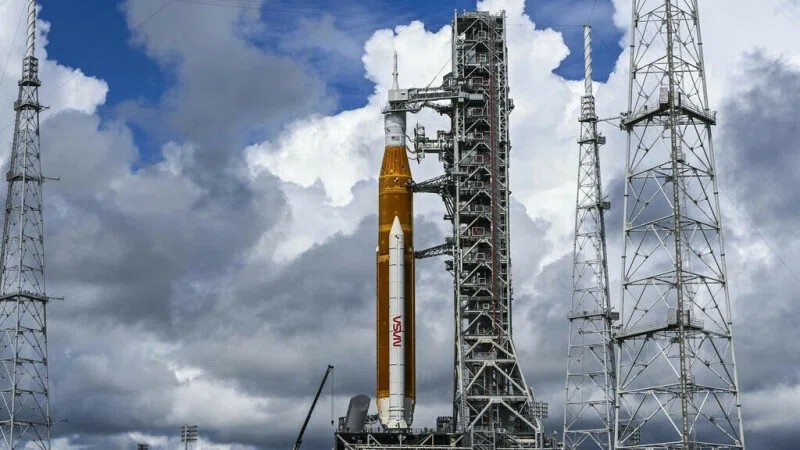NASA Is All Set To Launch Its Moon Rocket For The Second Time

Artemis-1, NASA’s brand new obsession and focus is supposed to bring the universe closer to humankind and would land the person on the moon again after 50 years. At first, it was supposed to be successfully launched on Monday but a test to get one of the rocket’s four RS-25 engines to the proper temperature range for the launch was not successful so it was postponed.
Mike Sarafin, the mission manager for Artemis-1, announced the date for the new launch attempt during a media briefing on Tuesday, and NASA later tweeted that the launch will probably start soon. Sarafin said, “the NASA team agreed to move our launch date to Saturday, September the third”.
Kennedy Space Center will be the space for the launch of the moon rocket and Artemis 1 will last for six weeks and will test all the rocket stages and spacecraft that would be used in later Artemis missions. The purpose that NASA is trying to serve out of this Project is to test the 322-foot Space Launch System rocket and Onion Crew Capsule that is associated with it. Sponsored Mannequins are placed on the rocket that can sensor all the movements felt by humans and their data can verify the legitimacy of the system.
Thousands of people, including the Vice President of the United States gathered to watch the launch and witness the beginning of an amazing trajectory that would take mankind to the moon after 50 years.
The new date, Saturday, is declared to be the best possible date for the launch in near future by Launch Weather Officer Mark Burger. He said that “there is a 60 percent chance of rain or thunderstorm on Saturday, but still a pretty good opportunity weather-wise to launch on Saturday.”
The rocket will orbit the moon for fourteen days and all the parameters for the safest human flight will be judged. Originally, the mission was planned to follow a circumlunar trajectory without entering orbit around the Moon. However, current plans have the Orion spacecraft spend approximately three weeks in space, including six days in a distant retrograde orbit around the Moon.
Artemis-1 has already cost NASA a ton, a total of $93 billion for the last decade and still it is pretty far behind the expectations. The next NASA project will be Artemis-2 which will take astronauts to the moon without them landing on the moon. And then finally Artemis-3 will land mankind on the moon again. The years it would take is yet unknown but the least expected date for a successful Artemis-3 is 2025.
Related Posts
Cyber Scam Bust in Thailand-Cambodia: 50 Pakistanis Rescued
A senior Thai official announced on Sunday that authorities rescued 215 foreign nationals in a major operation targeting a suspected cyber scam hub in…
Apple Gears Up for M4 MacBook Air Launch in March 2025
Apple is preparing to introduce its newest MacBook Air model, featuring the cutting-edge M4 chip, in March 2025. With this release, Apple’s entire MacBook…














